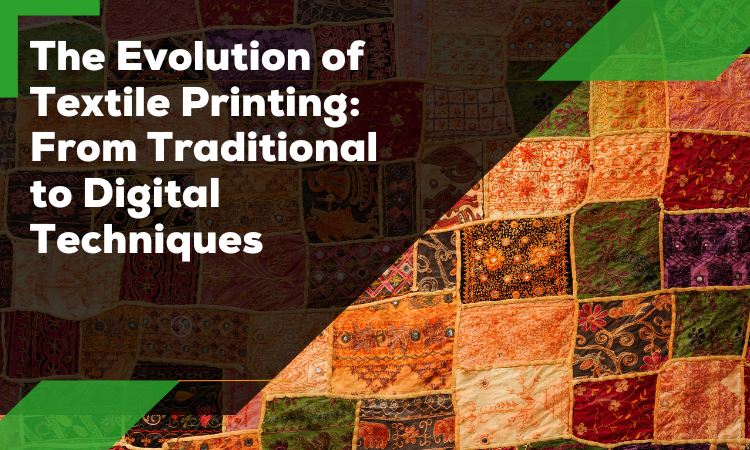Table of Contents
INTRODUCTION:
Are you an aspiring entrepreneur looking to venture into the textile industry? Look no further. In this blog post, we will provide you with essential information on becoming a successful textile distributor. From custom fabric printing to the rich history of textiles, we’ve got you covered. So grab your notebook and let’s dive into the world of textile distributors.The Role of Textile Distributors: Connecting Manufacturers and Retailers in the Industry
In the vast and dynamic world of textiles, there exists a crucial link that bridges the gap between manufacturers and retailers – textile distributors. Serving as the connective tissue, textile distributors play a pivotal role in ensuring a smooth flow of fabrics and garments from the production stage to the point of sale. These distributors act as a vital conduit, helping manufacturers reach a wider audience of retailers while enabling retailers to access a diverse range of quality textiles. This collaboration between manufacturers and retailers is essential for the textile industry to flourish. One key aspect of the textile distribution process involves providing retailers with access to a diverse array of fabrics. Whether it’s custom fabric printing, textile printing, or even sourcing materials with a rich historical significance, textile distributors are equipped with the knowledge and resources to cater to retailers’ varied needs. By offering a comprehensive selection of fabrics, distributors empower retailers to curate unique and appealing collections for their customers. Moreover, textile distributors play a vital role in ensuring that manufacturers can focus primarily on production without worrying about the complexities of distribution and logistics. Distributors handle the intricacies of inventory management, warehousing, shipping, and ultimately delivering the products to the retailers. This allows manufacturers to operate more efficiently and dedicate their expertise to the craft of producing high-quality textiles. The role of textile distributors extends beyond mere logistical support; they also provide invaluable industry insights to both manufacturers and retailers. With their extensive network and deep understanding of market trends, distributors can guide manufacturers in producing fabrics that align with evolving consumer preferences. Similarly, they assist retailers in staying up-to-date with the latest textile offerings, presenting opportunities for growth and innovation in their business. Overall, textile distributors serve as a crucial link in the textile industry, facilitating collaboration between manufacturers and retailers. Their seamless coordination streamlines the supply chain and ensures that customers have access to a diverse range of high-quality fabrics. With their expertise, industry insights, and commitment to excellence, textile distributors contribute significantly to the growth and success of the entire textile ecosystem.
A Comprehensive Guide to Successfully Starting a Textile Distribution Business
Starting a textile distribution business can be an exciting venture for entrepreneurs looking to enter the thriving textile industry. With the demand for custom fabric printing, textile printing, and the rich history of textiles, there has never been a better time to establish yourself as a textile distributor. In this comprehensive guide, we will walk you through the essential steps to launch and grow your business successfully.- Research and Planning: Begin by conducting thorough market research to understand the current landscape, trends, and potential competition in the textile industry. Identify your target market and develop a comprehensive business plan that outlines your mission, goals, and strategies for success.
- Establish Relationships with Suppliers: Building strong and reliable partnerships with textile suppliers is crucial. Establishing relationships with suppliers who offer high-quality fabrics, competitive pricing, and a wide variety of options will be key to meeting your customers’ needs.
- Develop a Multichannel Sales Strategy: Diversify your sales channels by establishing both online and offline platforms. Create a user-friendly website to showcase your product offerings and leverage various e-commerce platforms to reach a broader audience. Additionally, explore opportunities to collaborate with brick-and-mortar stores and attend trade shows to showcase your products.
- Invest in Marketing and Branding: Develop a strong brand identity that resonates with your target market. Utilize social media, online advertising, content marketing, and search engine optimization techniques to increase brand visibility and attract potential customers.
- Provide Exceptional Customer Service: Differentiate your textile distribution business by offering exceptional customer service. Promptly address customer queries, ensure timely order fulfillment, and offer flexible return policies to build long-lasting relationships with your customers.

Expanding Horizons: Embracing Custom Fabric Printing in Textile Distribution
The textile industry has undergone significant transformations throughout history, constantly adapting to changing consumer preferences and market demands. In recent years, one particular trend has emerged as a lucrative opportunity for textile distributors: custom fabric printing. With advancements in technology and a growing desire for personalized products, this niche market has opened up a world of possibilities. Custom fabric printing allows businesses and individuals to unleash their creativity, turning their unique designs into reality. By investing in the necessary equipment and partnering with reliable printing companies, textile distributors can offer an extensive range of options to their clients, catering to their specific needs and tastes. Whether it’s for clothing, home decor, or promotional items, custom fabric printing enables customers to make a statement and stand out from the crowd. Additionally, embracing custom fabric printing not only expands a textile distributor’s customer base but also boosts its revenue potential. By providing this value-added service, distributors can establish themselves as industry leaders, attracting new clients and building long-lasting relationships. From emerging fashion designers seeking unique prints to businesses looking to enhance their brand identity, the demand for custom fabric printing is on the rise and shows no signs of slowing down. As with any new venture, textile distributors need to research the market, understand the printing processes involved, and educate themselves on the various fabric options available. By staying informed and keeping abreast of the latest trends, distributors can offer expert advice and guidance to their clients, ensuring their custom fabric printing journey is seamless and successful.The Evolution of Textile Printing: From Traditional to Digital Techniques
Since ancient times, textiles have played a crucial role in human culture. From clothing to interior decor, the art of textile printing has evolved significantly over the years. In this blog section, we will explore the journey of textile printing techniques, from traditional to digital methods, and how it has shaped the industry today. A Brief History of the Textile Industry and Its Evolution for Distributors Traditionally, textile printing involved techniques like block printing, where wooden blocks were carved with intricate designs and dipped in dye before being pressed onto the fabric. This laborious process required skilled craftsmen and was time-consuming. However, the results were stunning and represented the rich cultural heritage of various civilizations. With the industrial revolution came advancements in textile printing. The invention of the cotton gin and steam-powered machinery revolutionized the industry, making textile production faster and more accessible. Techniques like screen printing and roller printing gained popularity, allowing for more intricate designs and mass production. In recent years, the emergence of digital textile printing has revolutionized the industry once again. Using advanced technology, designs can now be directly printed fabric with precision and accuracy. Custom fabric printing has become more accessible, designers the freedom to with unique patterns,, and textures. printing also offers environmental, as it reduces ink waste compared to traditional methods. It allows for smaller production runs, reducing excess inventory and waste. As we move forward, the future of textile printing looks promising. With advancements in 3D printing, smart fabrics, and sustainable materials, the industry is set to further evolve and cater to the ever-changing needs of consumers.
A Brief History of the Textile Industry and Its Evolution for Distributors
The textile industry has a long and fascinating history that spans centuries. From ancient civilizations to modern times, textiles have played a crucial role in human civilization and have evolved significantly over the years. As a distributor in the textile industry, it is essential to understand the roots of this industry to better appreciate its current state and future trends. The history of textiles can be traced back to as early as 27,000 BCE, during the Stone Age, when prehistoric humans used natural fibers like flax and wool to create basic fabrics. As civilizations developed, so did the techniques for spinning and weaving, leading to the advent of textiles as we know them today. During the Industrial Revolution in the 18th century, the textile industry underwent a significant transformation. The invention of the flying shuttle and power loom revolutionized fabric production, making it faster and more efficient. This marked the beginning of mass production, and textiles became more accessible to the growing population. In the 20th century, advancements in technology further revolutionized the textile industry. Innovations such as synthetic fibers, textile printing, and custom fabric printing opened up endless possibilities for creative designs and personalized fabrics. Distributors now have the opportunity to cater to individual preferences and niche markets, allowing for greater customization and specialization. Looking into the future, the textile industry is poised for even more significant advancements. Sustainable and eco-friendly textiles are gaining popularity, reflecting the growing consciousness of consumers towards the environmental impact of their purchasing decisions. Additionally, smart textiles and wearable technology are expected to drive innovation in the industry, offering enhanced functionality and integration with digital devices. As a distributor, staying up-to-date with the latest trends and technologies in the textile industry is crucial for success. Understanding the historical roots of this industry provides valuable insights into its evolution and paves the way for predicting future trends. With a keen eye on consumer demand and developments in technology, distributors can capitalize on the ever-changing landscape of the textile industry and build a thriving business.




